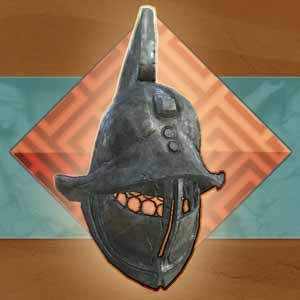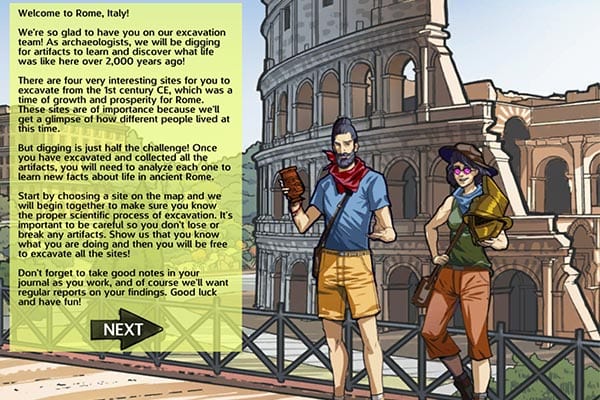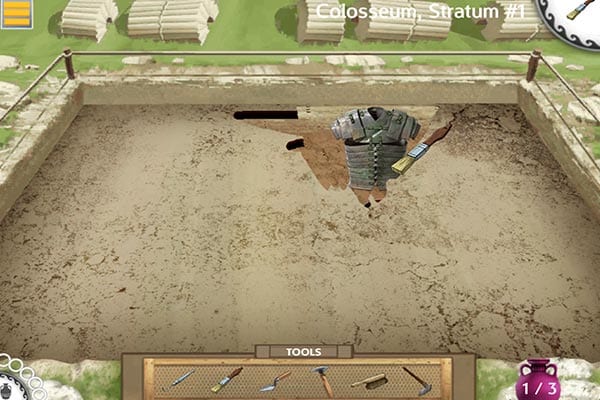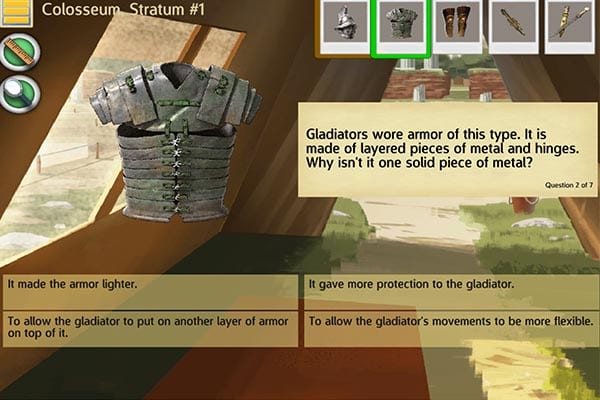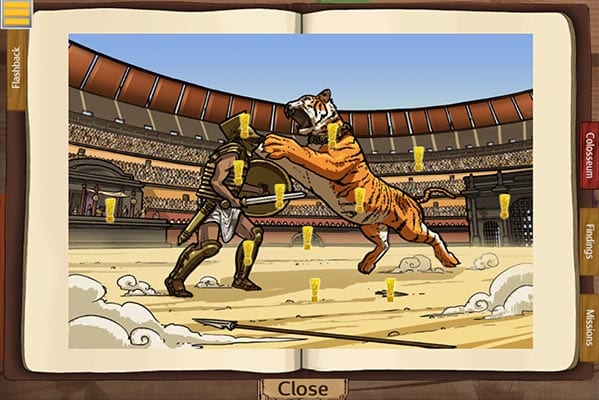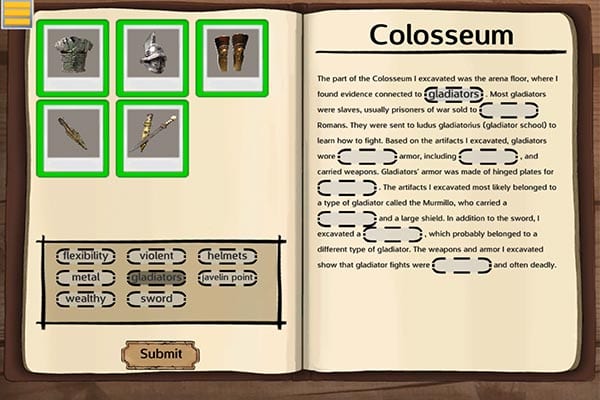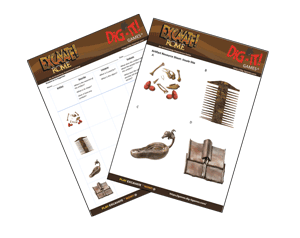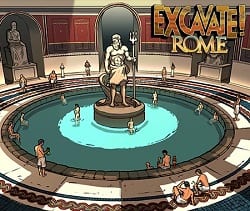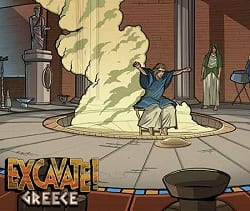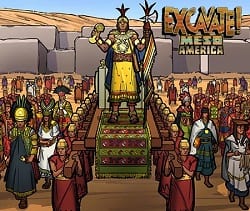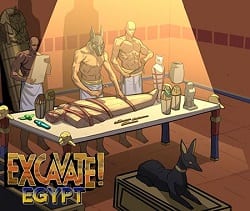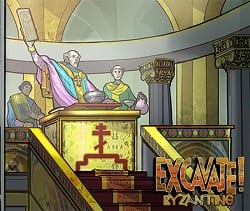Excavate! Rome
Apply C3 skills in this elementary and middle school social studies game that brings the ancient civilization of Rome to life through Archaeology.
Game Overview
Piece together the daily life of ancient Rome in this immersive social studies educational game! Use archaeological thinking to apply C3 skills of Inquiry and Evaluation of Evidence to aspects of Roman daily life not covered in textbooks.
Excavate and analyze four significant locations to make connections and deduce facts about the people who lived, worked and played there. Explore a Domus and Insula, homes that highlight very different lifestyles and illustrate social class differences. Investigate the Baths, a cornerstone of private and social life for all Romans. Examine the depths of the Colosseum to gain a deeper understanding of what really went on inside this iconic Roman building. Visit the sites in any order; your progress will be recorded in journals that log collected artifacts, field notes and achievements. At each location, make meaning of how artifacts were used through a series of analysis questions and reports that help you consider the historical context of the primary source artifacts to make connections.
Finally, players see each site come alive as artifacts populate an historically accurate image of Roman life. You’ll soon realize why Rome wasn’t built in a day!
Featured Learning Goals:
- Distinguish the roles of men, women, children and slaves in ancient Roman society
- Compare and contrast the lifestyles of upper, middle and lower-class Romans
- Explain the significance of public baths in Roman life
- Gain a new perspective on the Colosseum and understand how its structure reflected Roman society
- Describe the lifestyle and role of gladiators in Roman society
- List methods of medical care used to treat gladiators
- Explain architectural innovations that were used to build private homes, tenement apartments, public baths and the Colosseum
- Describe the diet and cooking methods of ancient Romans
Game Purchase Options
This world history educational product is available for HTML5 browser play at our store and for tablets at one of the app stores below. iOS and Android tablets are supported.
Price: $4.99 US (store may vary in price)
Bulk discounts are available for educational organziations.
Curriculum Materials
- Teacher’s Guide – a step-by-step guide for game-play as well as a resource containing all content and answers. (2 Files – Excavate Overview & Rome Content Guide)
- Inquiry-Based Analysis Lesson (D-I-E) – Activate student interest before playing Excavate! Rome by inviting students to describe artifacts and hypothesize their use in ancient Rome. Use the D-I-E lessons to record observations during game-play and to check their hypotheses for accuracy. It is a fun way to prepare and engage with content while playing Excavate! Rome. (Answer sheet included)
- Artifact-Based Question Prompt (ABQ) – Each location in Excavate! Rome culminates with a beautifully rendered scene that incorporates all excavated artifacts in an historically accurate scene. Use this scene combined with artifacts from the game to have your students answer a DBQ assignment that will demonstrate their learning. (rubric included)
- Excavate! Rome Card Game – Check for student understanding from our video game by having students play a card game cooperatively! Students will make connections between artifacts, locations and people in this divergent thinking game. (printable pdf)
C3 Framework for Social Studies Standards
- D2.Civ.1.6-8. Distinguish the powers and responsibilities of citizens, political parties, interest groups, and the media in a variety of governmental and nongovernmental contexts.
- D2.Civ.2.6-8. Explain specific roles played by citizens (such as voters, jurors, taxpayers, members of the armed forces, petitioners, protesters, and office-holders).
- D2.Eco.1.6-8. Explain how economic decisions affect the well-being of individuals, businesses, and society.
- D2.Eco.4.3-5. Explain why individuals and businesses specialize and trade.
- D2.Geo.6.6-8. Explain how the physical and human characteristics of places and regions are connected to human identities and cultures.
- D2.Geo.7.3-5. Explain how cultural and environmental characteristics affect the distribution and movement of people, goods, and ideas.
- D2.His.9.3-5. Summarize how different kinds of historical sources are used to explain events in the past.
- D2.His.3.6-8.Use questions generated about individuals and groups to analyze why they, and the developments they shaped, are seen as historically significant.
GBLxAPI
The Excavate! Rome educational game includes the new GBLxAPI standard developed through the support of the National Science Foundation. GBLxAPI creates a common standard for analytics collection across game-based learning and other digital educational products. In the Excavate! Rome game, GBLxAPI is used to track student progress against C3 and ELA education standards in an easy to read format. Learn more about this standard and how it can help you evaluate your students’ learning at gblxapi.org.
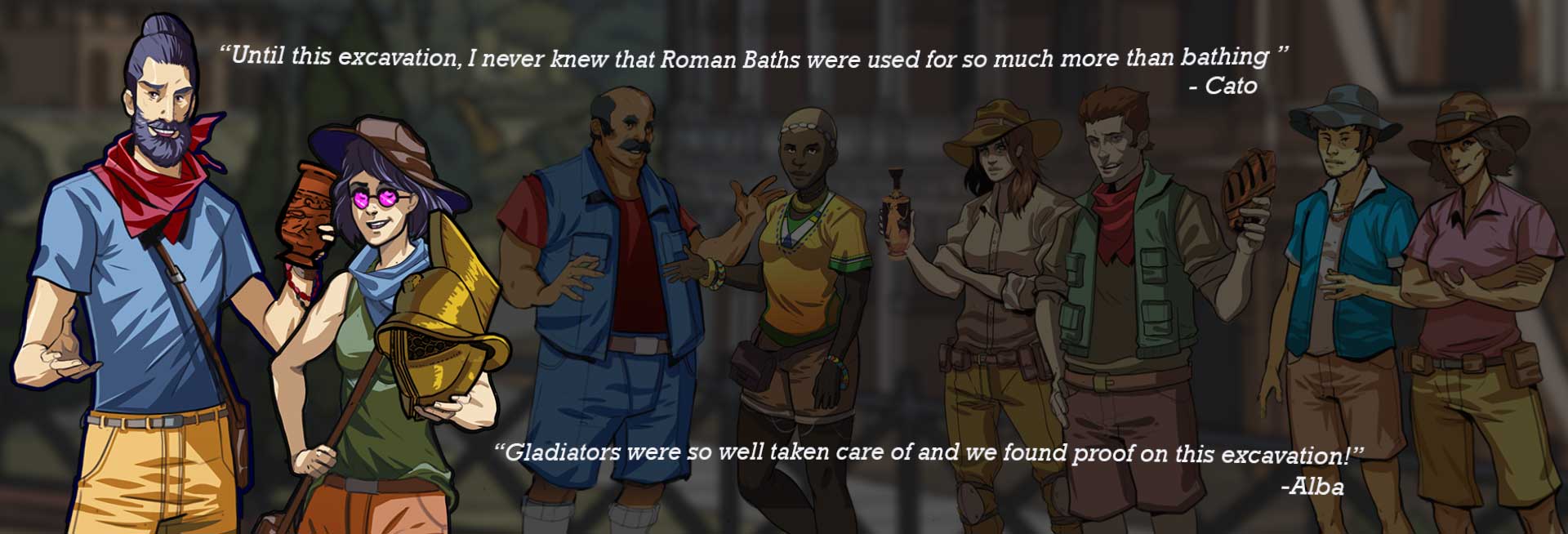
Platform Support
Six World Civilizations
Mesopotamia – Egypt – Greece – Rome – MesoAmerica – Byzantine

